GALK1
-
Official Full Name
galactokinase 1
-
Overview
Galactokinase is a major enzyme for the metabolism of galactose and its deficiency causes congenital cataracts during infancy and presenile cataracts in the adult population. -
Synonyms
GALK1; galactokinase 1; GALK; galactokinase; EC 2.7.1.6; Galactose kinase; GALK 1; GALK1_HUMAN; GK1; GLK; GLK1;
- Recombinant Proteins
- Cell & Tissue Lysates
- Human
- Mouse
- Zebrafish
- E.coli
- HEK293
- HEK293T
- In Vitro Cell Free System
- Insect Cell
- Insect Cells
- Mammalian Cell
- Wheat Germ
- C
- His
- GST
- Myc
- DDK
- Myc|DDK
- N/A
- Background
- Quality Guarantee
- Case Study
- Involved Pathway
- Protein Function
- Interacting Protein
- GALK1 Related Articles
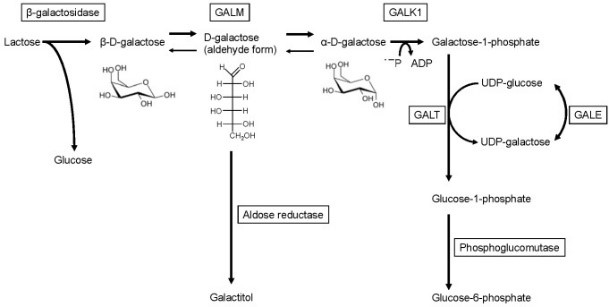
Fig1. Enzymatic pathways related to galactose metabolism. (Atsuo Kikuchi, 2021)
What is GALK1 protein?
GALK1 (galactokinase 1) gene is a protein coding gene which situated on the long arm of chromosome 17 at locus 17q25. The main function of GALK1 protein is to catalyze the phosphorylation between galactose and ATP, converting galactose to galactose-1-phosphate. This step is the first enzyme-catalyzed reaction of the galactose metabolic pathway and one of the key steps to maintain the normal operation of the entire metabolic pathway. The GALK1 protein is consisted of 392 amino acids and its molecular mass is approximately 42.3 kDa.
What is the function of GALK1 protein?
It catalyzes the transfer of a phosphate from ATP to alpha-D-galactose and participates in the first committed step in the catabolism of galactose.
GALK1 Related Signaling Pathway
The signaling pathway involved in GALK1 protein mainly involves galactose metabolic pathway and the pathway related to glucose metabolism, such as glycogen metabolism and glycolysis. Among these signaling pathways, GALK1 is involved in the regulation of intracellular energy balance and sugar utilization by regulating galactose metabolism, thereby affecting cell function and metabolic regulation.
GALK1 Related Diseases
Defects or mutations in the GALK1 protein can lead to abnormalities in galactose metabolism, which can lead to diseases such as hereditary galactose intolerance (galactosemia). This genetic disorder causes galactose to build up in the body, triggering a range of serious and potentially fatal symptoms such as developmental delays, impaired liver function, neurological problems and more.
Bioapplications of GALK1
While GALK1 shows potential applications in these areas, many applications are still in the research stage and have not been fully translated into clinical practice. Especially in the diagnosis, prevention and treatment of related diseases.
High Purity

Fig1. SDS-PAGE (GALK1-4681H) (PROTOCOL for western blot)
.
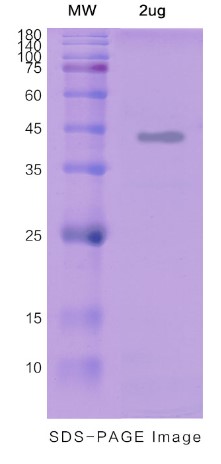
Fig2. SDS-PAGE (GALK1-2327H) (PROTOCOL for western blot)
Case study 1: Martyn A Sharpe, 2021
Glioblastoma (GBM) can use metabolic fuels other than glucose (Glc). The ability of GBM to use galactose (Gal) as a fuel via the Leloir pathway is investigated. Gene transcript data were accessed, growth studies were performed and Gal metabolism was examined using proton, carbon and phosphorous NMR spectroscopy.
Data analysis from published databases revealed that elevated levels of mRNA transcripts of SLC2A3 (Glut3), SLC2A14 (Glut14) and key Leloir pathway enzymes correlate with poor patient outcomes. The 13C NMR-based metabolic flux analysis demonstrated a fully functional Leloir pathway and elevated pentose phosphate pathway activity for efficient Gal metabolism in GBM cells. In all, the expression of Glut3 and/or Glut14 together with the enzymes of the Leloir pathway allows GBM to transport and metabolize Gal at physiological glucose concentrations, providing GBM cells with an alternate energy source.
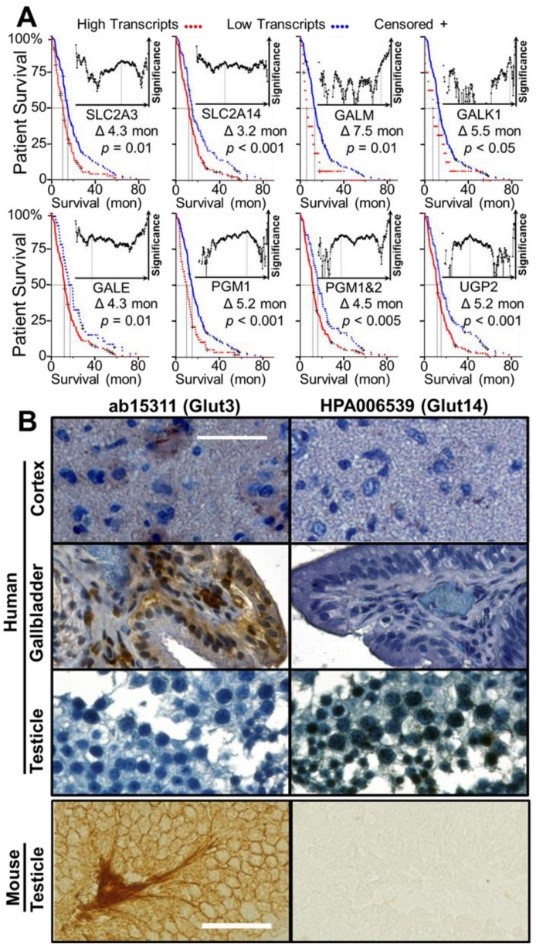
Fig1. Correlation between the expression levels of Gal import genes (SLC2A3, SLC2A14, GALM, GALK1, GALE, PGM1/2 and UGP2).
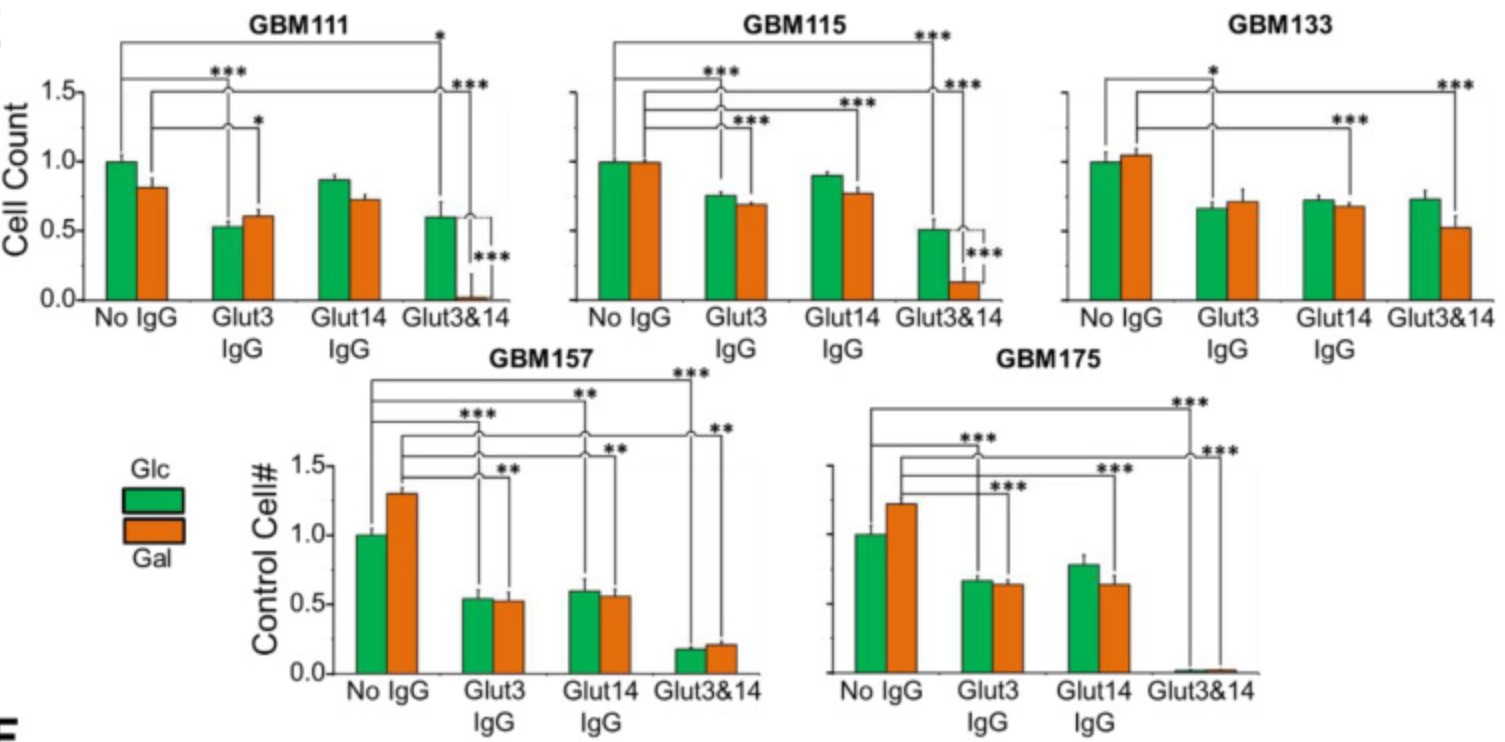
Case study 2: James M Termini, 2017
Here the researchers describe derivatives of the HEK293T cell line that are defective in their ability to generate mucin-type O-linked glycosylation. Using CRISPR/Cas9 and a single-cell GFP-sorting procedure, the UDP-galactose-4-epimerase (GALE), galactokinase 1 (GALK1), and galactokinase 2 (GALK2) genes were knocked out individually and in combinations with greater than 90% of recovered clones having the desired mutations. GALK1 and GALK2 are key enzymes of the galactose/GalNAc salvage pathways. Mass spectrometry was performed on whole cell lysate of the knockout cell lines to verify the glycosylation phenotype. Mass spectrometry analysis revealed that the disruption of GALE, GALK1, and GALE+GALK2 had little effect on the N-glycome. But when GALE was knocked out in tandem with GALK1, N-glycans were exclusively of the high mannose type. Due to the well-characterized nature of these five knockout cell lines, they will likely prove useful for a wide variety of applications.

Fig3. Validation of GALK1 and GALE+GALK1 deficient knockout cell lines.
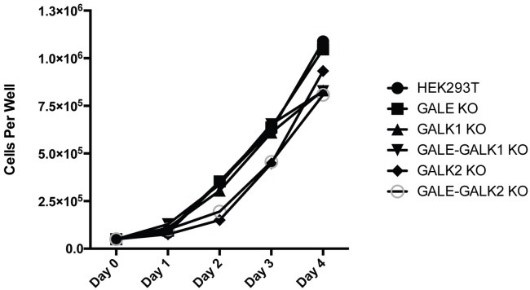
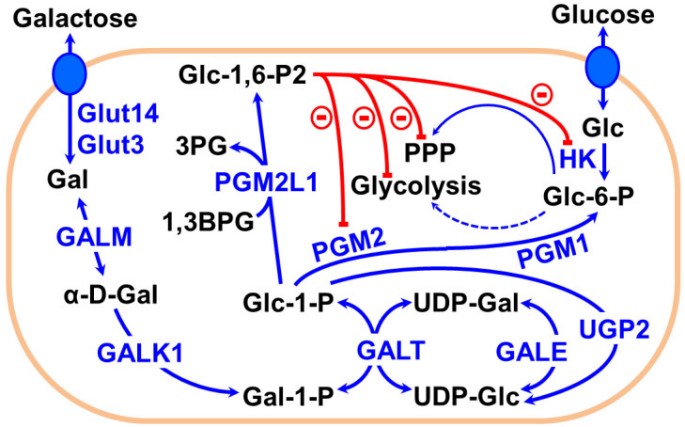
Fig1. Ilustration of the metabolism of galactose through the Leloir pathway. (Martyn A Sharpe, 2021)
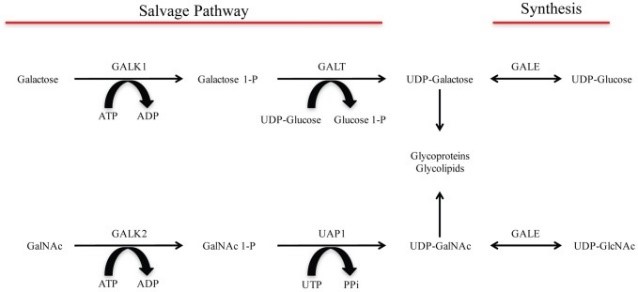
Fig2. Leloir pathway of galactose metabolism. Illustrated are the 2 different pathways in which galactose and GalNAc can be salvaged or synthesized for use in glycosylation. (James M Termini, 2017)
GALK1 involved in several pathways and played different roles in them. We selected most pathways GALK1 participated on our site, such as Galactose metabolism, Amino sugar and nucleotide sugar metabolism, Metabolic pathways, which may be useful for your reference. Also, other proteins which involved in the same pathway with GALK1 were listed below. Creative BioMart supplied nearly all the proteins listed, you can search them on our site.
| Pathway Name | Pathway Related Protein |
|---|---|
| Galactose metabolism | GANC;AKR1B8;PFKP;GALM;PFKM;HKDC1;G6PC2;B4GALT1;GLB1 |
| Amino sugar and nucleotide sugar metabolism | GALK1;NPL;GKUP;CMAS;NANSA;GALT;UGP2;GPIB;CYB5RL |
| Metabolic pathways | INPP5B;NADKD1;UGT5G1;CYP2P9;ADO;PEMT;B4GALT2;ST3GAL4;CYP2C37 |
GALK1 has several biochemical functions, for example, ATP binding, galactokinase activity, galactose binding. Some of the functions are cooperated with other proteins, some of the functions could acted by GALK1 itself. We selected most functions GALK1 had, and list some proteins which have the same functions with GALK1. You can find most of the proteins on our site.
| Function | Related Protein |
|---|---|
| ATP binding | MOCS3;ACSM1;CDK11B;CASKB;FYNA;SMARCA2;TMEM38A;PDGFRB;DDX18 |
| galactokinase activity | GALK2;GALK1 |
| galactose binding | ENG;COLEC12;CLEC4F;GALK1;LGALS9 |
GALK1 has direct interactions with proteins and molecules. Those interactions were detected by several methods such as yeast two hybrid, co-IP, pull-down and so on. We selected proteins and molecules interacted with GALK1 here. Most of them are supplied by our site. Hope this information will be useful for your research of GALK1.
OTUD4; DMWD; 15-deoxy-delta(12,14; ESR1; VCAM1; CD9; AGO4
- Q&As
- Reviews
Q&As (6)
Ask a questionYes, there may be different subtypes or variants of GALK1 that may have different biological functions.
Different subtypes or variants may play different roles in cells, and the specific mechanisms need further research.
Regulating the expression of GALK1 may affect the glycolysis process and energy metabolism of cells.
The mechanism of action of these drugs may include inhibition of GALK1 activity, regulation of its expression level, etc.
In addition to glycolysis, GALK1 may also be involved in other biological processes, such as cell signaling.
The expression of GALK1 can be regulated by gene knockout, transgene and other technologies.
Customer Reviews (3)
Write a reviewThe production process of GALK1 is stable and reliable, with high batch refolding.
GALK1 is pure and has no other proteins or impurities.
GALK1 has good stability in solution and is not easy to aggregate or deactivate.
Ask a Question for All GALK1 Products
Required fields are marked with *
My Review for All GALK1 Products
Required fields are marked with *


